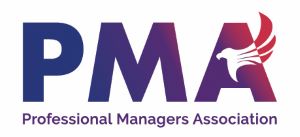

MEMORANDUM FOR ALL IRS Managers
FROM: Traci M. DiMartini
IRS Human Capital Officer
SUBJECT: Guidelines for Absence Without Leave (AWOL)
Attendance related issues are among the most common challenges for federal supervisors. Failure to report to work as scheduled can have a negative impact on an organization’s ability to complete the mission and thus affect the efficiency of the service. The purpose of this memorandum is to remind supervisors of guidelines for AWOL. Supervisors should make every effort to work with employees to correct a situation before resorting to AWOL and/or disciplinary measures.
In accordance with IRM 6.630.1.13, AWOL is a non-pay status for any absence from duty not officially and properly authorized. AWOL is charged in 15-minute increments. Employees are expected to be at work on time unless they have requested leave and received approval for that leave. When they are absent without managerial notice or approval, the potential for AWOL exists. A charge of AWOL on a time and attendance record is not a disciplinary action. However, it can form the basis for future disciplinary actions. An employee who is AWOL may be disciplined by the IRS.
•The employee’s work record. For example, whether this is the employee’s first request, attendance history, medical issues, and personal circumstances.
•Approving leave without pay (LWOP), upon the employee’s request and if nonother leave is available.
•Is absent without permission,
•Has not notified or obtained approval of an absence from their manager in accordance with established procedures, and/or 2
• Has not provided satisfactory documentation or an explanation for absence from duty, including the timely submission of requested medical documentation.
o Allow the employee to provide evidence or medical certification within 15 calendar days after the date requested by the IRS, but no later than 30 calendar days if, despite the employee's diligent, good faith efforts, the employee cannot provide the documentation within the 15 calendar days.
When the Employer determines that it will charge an employee AWOL, it will notify the employee of the AWOL charge in writing as soon as possible but no later than the end of the pay period or within two workdays of the AWOL charge, if the AWOL charge occurs during the last two days of the pay period (see Article 32, Section 9, and Exhibit 32-1 of the 2022 National Agreement). Such notice will include the reason for charging AWOL and the time period(s) in question and will be delivered to the employee in person if the employee is present in the workplace. If the employee is not present and/or is not expected to be present within a reasonable period of time, the notice will be mailed to the employee’s home address with a certified mailing receipt. Failure to timely issue AWOL notices could result in a contract violation.
AWOL is different from LWOP in that LWOP is an authorized absence in a non-pay status that may be approved at management’s discretion based on the needs of the employee and the interests of the IRS. There are limited circumstances in which LWOP is an entitlement that must be approved (i.e., Family Medical Leave Act, disabled veterans needing medical treatment under an executive order, and Office of Workers’ Compensation Program). An employee may request LWOP without invoking FMLA, combine the use of LWOP with other IRS flexibilities, and request up to 24 hours of LWOP per leave year for specific family-related purposes. Please see IRM 6.630.1.10 for a detailed discussion of LWOP, including various reasons for which LWOP may be requested, information on LWOP for related family and medical leave reasons (not FMLA), and the OPM LWOP fact sheet.
Charging AWOL depends on the circumstances of the situation. If the employee returns to work with a valid reason for both the absence and the failure to contact their supervisor, or presented acceptable documentation, supervisors should consider changing the AWOL charge to an appropriate type of leave for the period of absence on a retroactive basis. Supervisors should exercise judgment based on the specific situation.
When a supervisor determines that a charge of AWOL is appropriate, they should contact Labor/Employe Relation and Negotiations (LERN) Field Operations for further guidance at IRS Service Central or by calling the LERN Support Gate at 1-866-743-5748, Option 1, and Option 6, Monday through Friday, 7:00 a.m. to 7:00 p.m., Central Time.